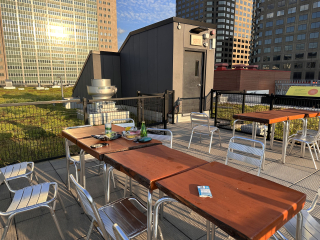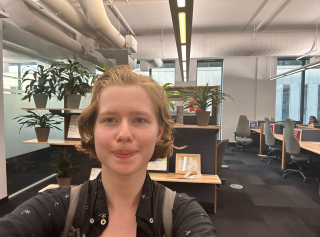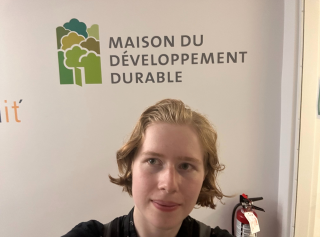My name is Emma Bainbridge, and I’m entering my third year at McGill. I’m an Honours Urban Studies student with a minor in Communications Studies. I’m very interested in climate justice, urban planning, and grassroots organizing, which is why I decided to intern with the Climate Reality Project Canada this summer. I was drawn to this internship because I believed that I would learn a lot about climate organizing, particularly the role of non-profits in this struggle. I wanted to know what a job would look like supporting climate organizing all over the country and connect with people already involved in that network.
The Climate Reality Project Canada is a Canadian offshoot of an organization by the same name founded by Al Gore to educate people about climate issues and train them to become climate leaders within their communities. The CRPC is very independent from its American counterpart and runs a variety of programs related to climate advocacy, such as training climate leaders, organizing a summit for university students, and gathering data on climate-related performance indicators for Canadian cities. I personally worked with the Community Climate Hubs program, which supports a network of Hubs, groups advocating for local climate solutions in their municipalities, across Canada.

My main responsibility as an intern was to assist in drafting the ‘Organizing in Rural and Remote Communities Toolkit,’ a new tool that the CRPC was creating to share with its network. As much existing advice and tools surrounding climate organizing focuses on urban contexts, the CRPC wanted to create something specifically dedicated to organizers in rural areas. I was responsible for sourcing case studies to include in this toolkit which showcased successful organizing strategies in rural areas. To do this, I spent several hours interviewing organizers from rural areas to learn about their experiences and what had or hadn’t worked for them. These conversations were very interesting, as I was speaking to people who came from very different backgrounds to me, and it was fascinating to hear their stories. This was definitely the highlight of the internship. While all of the conversations were interesting, I particularly enjoyed talking to one woman who was an organizer in massive anti-shale gas protests in New Brunswick in 2013-14. This was a movement that gained support all over Canada, particularly in Indigenous communities, and eventually succeeded in preventing fracking from happening in New Brunswick. It was fascinating to hear the story of how this movement was born, and the organizing that had to happen for it to become so widespread.
Other tasks included creating PowerPoint presentations for Hubs to use when training and recruiting members and writing blogs for their ‘Hublog.’ The Hublogs talk about climate solutions and organizing, using showcasing the Hubs’ work. For my Hublog, I interviewed Hubs about organizing around municipal budgets to discuss why municipal budgets are a good area to push for climate solutions. I’m interested in pursuing a career in journalism, so writing Hublogs were a great way for me to strengthen my writing and interviewing skills.

The main challenge that I encountered was scheduling. In May, I was doing a summer field course and had to take a two-week break from the internship for that. In June and July, I was working full-time in addition to this internship, so I was mostly doing my tasks in the evenings and on weekends. My computer also broke down halfway through the internship and I had to send it away to get fixed, although luckily I had been given a temporary computer by my other job which I could use. Luckily, I was able to overcome these challenges because my supervisor was very understanding and accommodating of my schedule and other difficulties that arose. I found that maintaining good communication and keeping her up to date about my capacity really helped us to adapt to these situations and work together to find a solution.

I am not receiving academic credit for this internship. This internship helped me to get a better understanding of what a job in a non-profit setting would look like and allowed me to build connections with people who could support me on my future career path. Thank you to the Dean of Arts Lisa Shapiro for donating the money that allowed me to pursue this internship. I think that unpaid internships are often very exploitative of students’ labour, and I'm really happy that the AIO is able to provide funding to students undertaking internships that might otherwise be unpaid.

